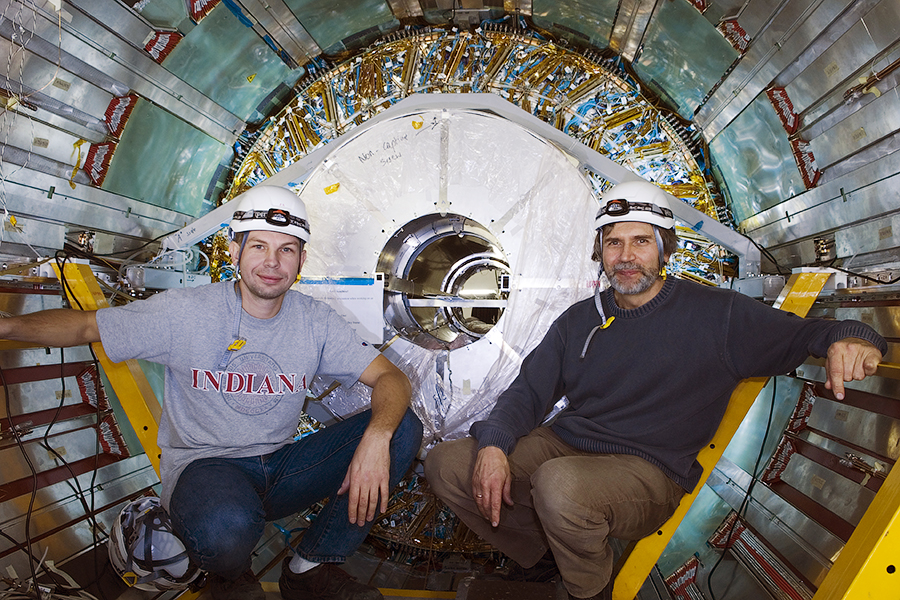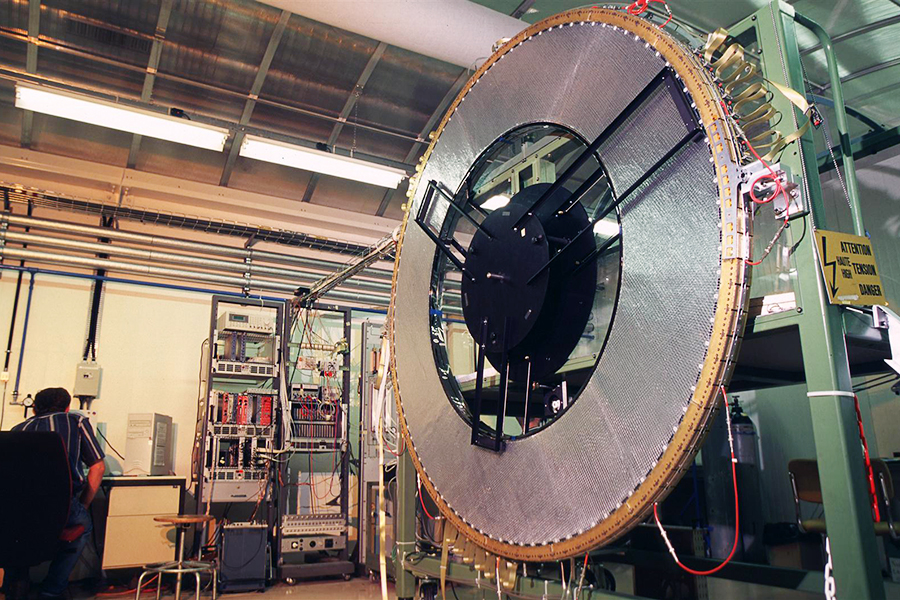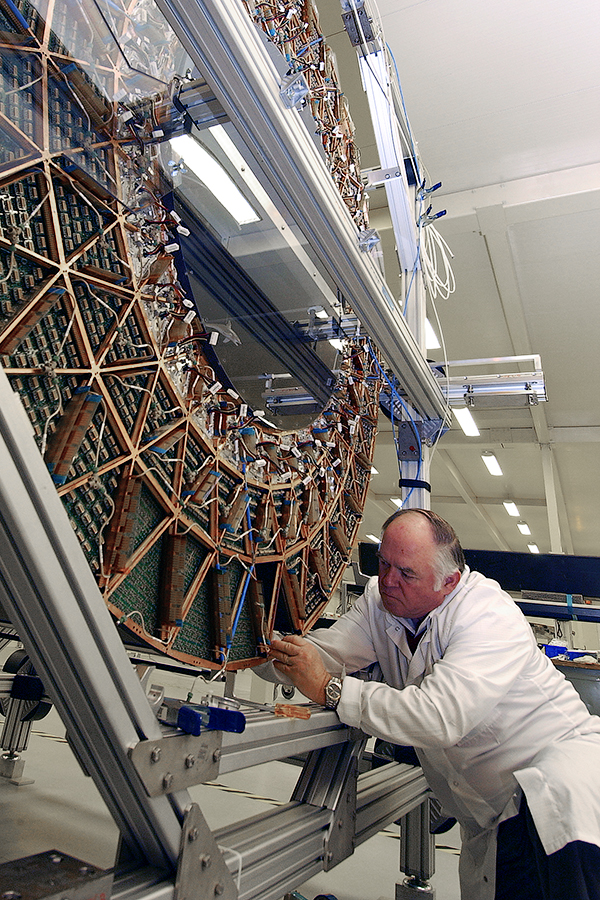Transition radiation (TR) is a form of electromagnetic radiation emitted when a charged particle passes through inhomogeneous media which for the first time was demonstrated theoretically by Ginzburg and Frank in 1946. It was detected experimentally in Yerevan Physics Institute in 1959.
As the Head of the Centre of Fundamental research and physics of particles S.G. Rubin claims, the idea to use transition radiation for detection of particles was offered by former Head of the Department №40 B.A. Dolgoshein.
MEPhI Department of Physics of elementary particles actively participates in international physical experiments including the ones connected with the application of transition radiation. Scientists have started working out experimental methodology using the effect of transition radiation, creation of scientific equipment, conducting experiments at accelerator beam SPS in CERN since 1978. In 1984-1989 a full scale detector of transition radiation was created for NA34 (HELIOS) experiment. Department №40 employees worked out a unique combined high-speed tracking detector of transition radiation for ATLAS experiment at LHC which will work until 2023.

Above: The Petersburg Nuclear Physics Institute (PNPI) employee K.Egorov (on the left) and MEPhI Department №40 Professor A.S. Romaniuk in the array centre ATLAS at the LHC after setting up central module detector TRT (in the background). CERN, 2006
A new experiment SAS (Small Angles Spectrometer) is planned apart fr om ATLAS experiment in CERN wh ere MEPhI scientists take part. A new and unexpected construction of IP detector should be offered for its launch at the Department №40. The project “Working out of detectors of transition radiation for identification of hadrons in TeV field of energies” was supported by the Russian Science Foundation for getting a grant. MEPhI employees turned out to be the first to work out transition radiation detectors able to divide hadrons in record high field of energies from 1 to 6 TeV.
Theoretical research aimed at studying of opportunities of application of different materials and structures for radiators of transition radiation will be conducted during the work under the project. The working prototypes of detector of transition radiation will be made and tests on particle beams will be conducted.

Picture 2. One of the modules of the butt end of TRT detector in CERN assembly building. 2000
Creation of detectors of transition radiation will give opportunities for solving of many tasks in experiments on accelerators and in cosmic research. For example, this is a key methodology in a planned experiment on studying of hadron formation at a low angle at the Large Hadron Collider.

Employee of the Indiana University (the USA) J.Kallagen at the assembly of central module detector TRT in CERN array centre





